The tamper Seal (also known as a security seal) plays a vital role in achieving these goals. Whether used for tamper-proof packaging in law enforcement or as security seals in prisons, these seals ensure that unauthorized interference is immediately visible.
This article explores the different types of tamper seals, their various applications, and how they help protect critical assets from tampering. Let’s get going.
What are Tamper-Evident Seals?
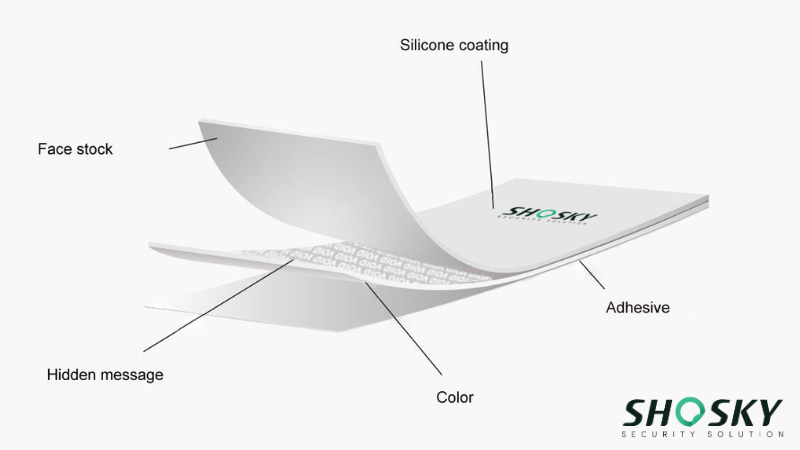
Tamper-evident seals are used to show if something has been opened or touched. They do not stop someone from opening a package. Instead, they make it clear if tampering has happened. These seals are often used during shipping or storage to protect items.
Tamper-evident seals are indispensable tools in law enforcement and correctional facilities, ensuring the integrity of evidence, preventing contraband, and maintaining security protocols. In 2023, federal prisons reported 97,801 prohibited acts, with 45% occurring in medium-security facilities. Implementing tamper-evident seals on containers and equipment can mitigate such incidents by providing clear indicators of unauthorized access.
These seals are useful for transferring evidence from one location to another. For example, they protect items sent from a crime scene to a lab. If the seal is broken, people will know something is wrong. They also help avoid legal problems. If evidence is not protected, it might not be allowed in court. The seal provides clear evidence that no one has tampered with it.
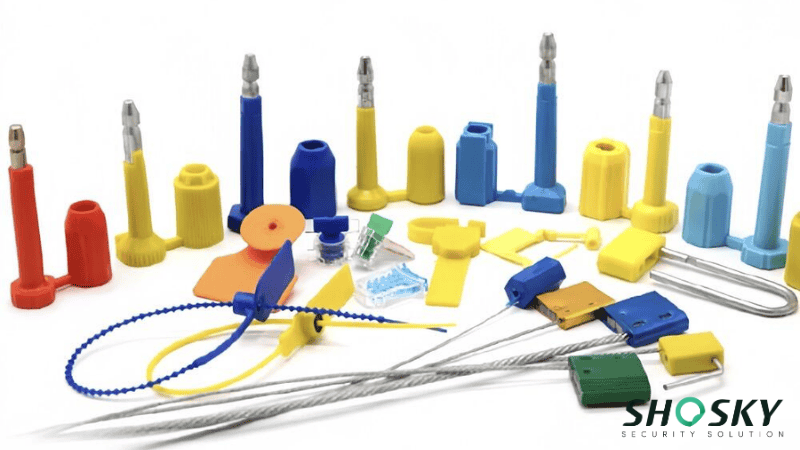
In short, tamper-evident seals help protect items. They keep evidence safe, stop tampering, and make sure the legal process is fair.
Types of Security Seals for Law Enforcement and Prisons
Here are the most common types of security seals to meet the diverse needs of law enforcement and correctional facilities: Adhesive seals, Metal seals, Bolt seals, Cable seals, and Electronic seals.
Now, let’s have a detailed look at each of these:
Adhesive Seals
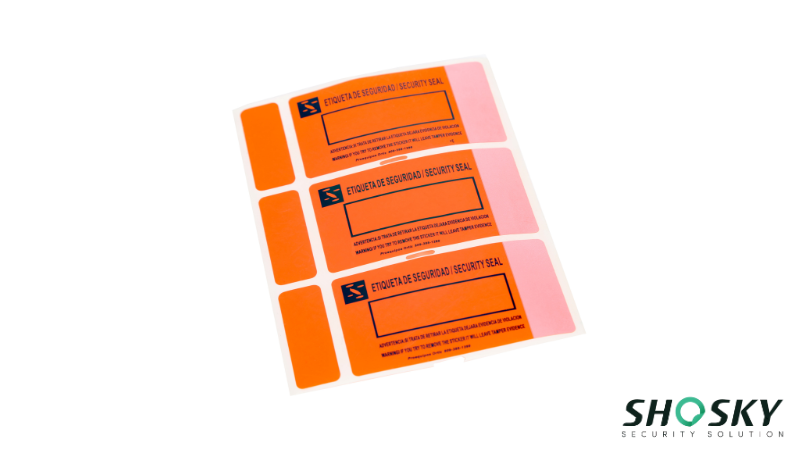
Adhesive seals are designed to show clear signs of tampering, making them essential for protecting sensitive evidence and maintaining the chain of custody. They are commonly used in situations where cost-effective, single-use security is required and where visual indication of interference is critical.
Here are the common uses of adhesive seals:
- Evidence Bags and Envelopes: These seals are widely used to secure evidence packaging. Any attempt to open the bag leaves visible residue or damage, deterring unauthorized access.
- Sealing Documents and Containers: Adhesive tamper-evident labels and tapes can be applied to envelopes, boxes, and storage units. They indicate if a seal has been broken or compromised.
- Temporary Holding Cells and Property Bags: Used in situations where items or areas are only temporarily secured, such as prisoner belongings or temporary holding facilities.
- Digital Chain of Custody: Barcoded or serialized tamper-evident seals enhance traceability and allow for digital logging of evidence handling.
Metal Seals
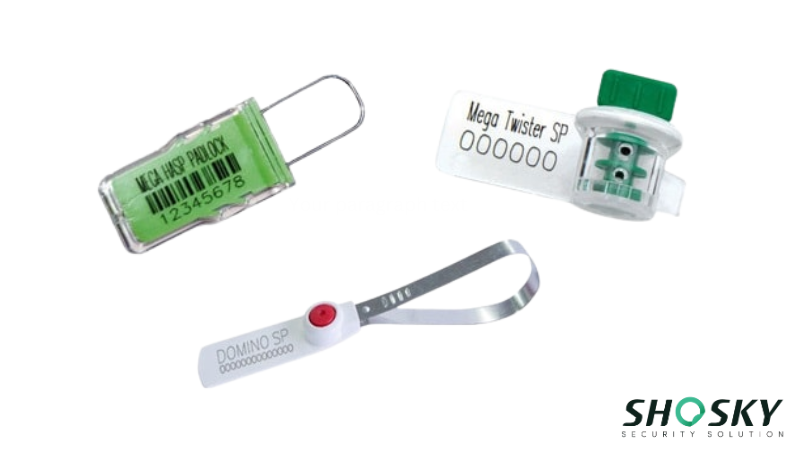
Known for their strength and tamper resistance, metal seals are a top choice for securing high-risk items. These robust security seals are constructed from durable materials resistant to cutting and manipulation, making them ideal for applications demanding maximum security. The tamper-evident nature of these seals ensures that any attempt at tampering leaves clear signs.
Here are the common uses of metal seals:
- Evidence Containers: Metal seals are used to secure evidence bags or containers, ensuring the integrity of the chain of custody. They prevent unauthorized access to critical forensic evidence.
- Sensitive Material Transport: These seals are commonly used to secure sensitive materials during transit. They ensure that items such as cash, documents, or drugs are not tampered with while in transit.
- Storage Lockers: Metal seals are often applied to lockers or containers holding critical items, such as weapons, drugs, or confidential documents, to prevent unauthorized access.
- High-Value Equipment: Used to secure high-value law enforcement equipment, metal seals provide a reliable solution for protecting items like surveillance tools or tactical gear.
Bolt Seals
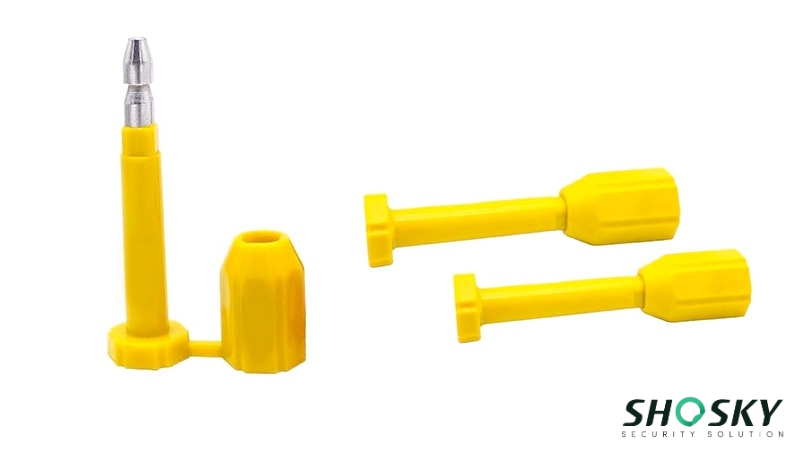
Bolt seals are a specific type of security seal designed for maximum strength and tamper resistance. They are made from heavy-duty materials, making them resistant to cutting, twisting, or breaking.
They are also equipped with a unique locking system that is highly resistant to tampering. The mechanism is designed to ensure that the seal cannot be easily bypassed. Besides, each bolt seal features a unique identification number, which helps enhance accountability and traceability.
Here are the common uses of bolt seals:
- Prisoner Transport: Secures vehicles transporting prisoners, ensuring that unauthorized access is immediately detectable.
- Evidence Transportation: Protects evidence containers, maintaining the chain of custody and preventing tampering.
- High-Value Goods: Safeguards items like electronics, cash, or pharmaceuticals during transport.
Cable Seals
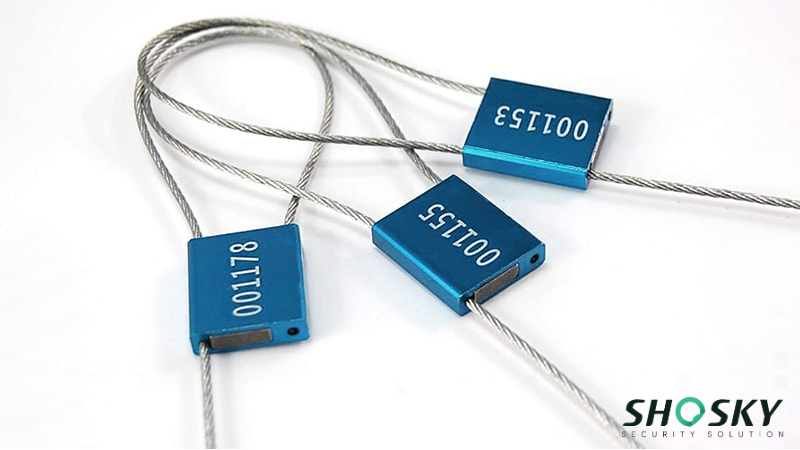
Cable or wire seals offer a combination of flexibility and strength, making them highly versatile for securing irregularly shaped items or areas demanding adjustable locking solutions. The ease of inspection is a key benefit of these tamper-evident seals, enabling staff to quickly and easily identify any attempts to compromise the integrity of secured items or areas.
Beyond their security applications, cable seals also offer a cost-effective and efficient way to enhance overall accountability and traceability. Unique seal numbering or barcoding allows agencies to track the movement and handling of secured items, strengthening their operational readiness and credibility.
Here are common uses of cable seals:
- Gates and Storage Facilities: Cable seals are often used to secure gates or storage units in correctional facilities.
- Irregularly Shaped Items: Cable seals are ideal for securing irregularly shaped goods or large evidence items that may not fit into standard containers. For example, they can be used to secure large items of equipment or machinery.
- Large Containers: These seals are also commonly used to secure large shipping containers or vehicles transporting evidence.
Electronic Seals
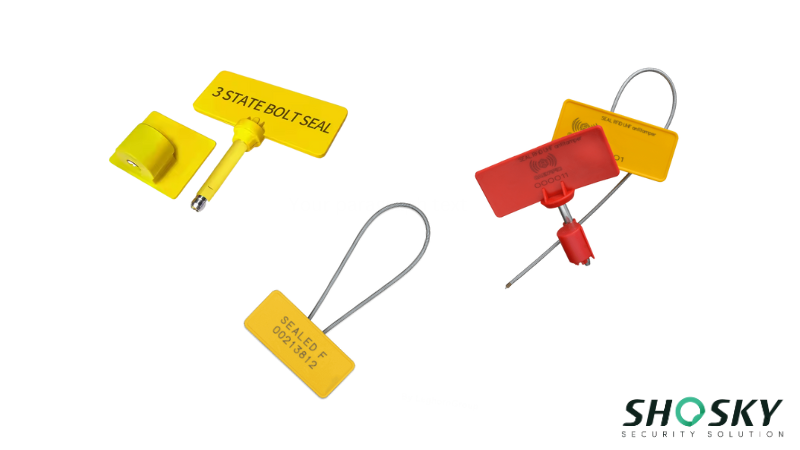
Electronic seals represent the cutting edge of security technology, offering real-time monitoring and instant alerts in the event of tampering or breaches. When an electronic seal is breached or removed, the system immediately triggers an alert, allowing agencies to respond swiftly and investigate any unauthorized activity. This proactive approach helps maintain a foolproof chain of custody, ensuring the integrity and accountability of critical materials throughout their handling and storage.
Here are the common uses of electronic seals:
- Evidence Tracking: Electronic seals are ideal for tracking high-value or sensitive evidence, ensuring that it remains secure throughout the entire chain of custody. For example, they can be used to monitor items like firearms, drugs, or money during transport or storage.
- Sensitive Equipment: Law enforcement agencies use electronic seals to monitor sensitive equipment, such as surveillance devices or communication tools. The real-time alerts provide immediate notifications if tampering occurs.
- Inventory Management: Electronic seals can be used to monitor inventory in storage facilities or evidence rooms. Their ability to provide real-time updates ensures that all assets are accounted for and secure.
How Tamper-Evident Seals Work to Prevent Tampering?
Tamper-evident seals are designed to react in distinct ways when tampered with, ensuring that any breach of security is visible and detectable. These reactions provide clear evidence of interference, offering enhanced protection for goods and materials.
Destructible Reaction
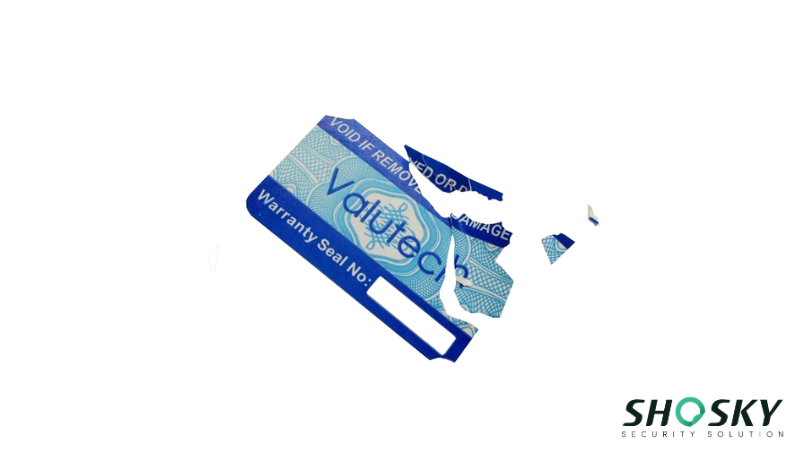
One common reaction is the destructible reaction, where the seal is designed to break apart or leave a permanent imprint when tampered with.
This ensures that once the seal is compromised, it cannot be reattached or restored, making the tampering event irreversible and easily detectable. The destructible nature of these seals ensures maximum security and prevents any attempts at concealment.
Serial Number Reaction
Lastly, the serial number reaction adds an extra layer of accountability. Each seal is assigned a unique serial number for precise tracking and identification. If tampering occurs, this system allows compromised items to be quickly identified.
This feature is especially useful for high-value goods or those requiring an audit trail. Additionally, the number of seals with serial numbers can be customized to meet specific requirements.
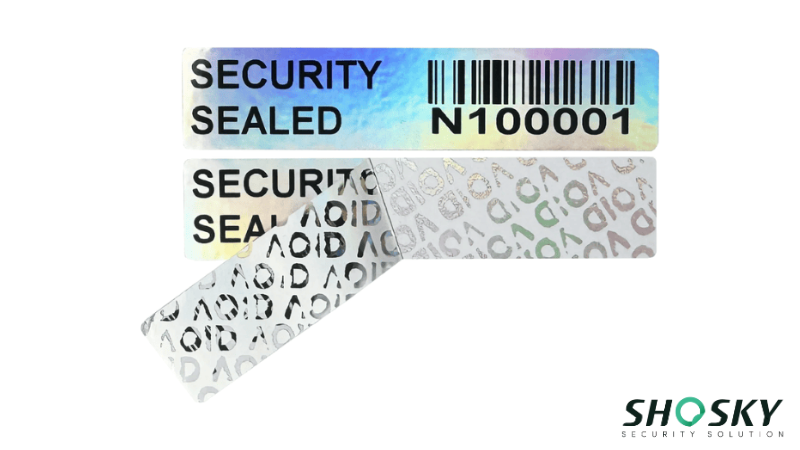
Color-Changing Reaction
Another reaction is the color-changing reaction, where the seal changes color upon tampering. This immediate and visible transformation provides clear confirmation that the seal has been compromised and unauthorized access has occurred.
Such an obvious indicator helps quickly identify breaches and maintain the secured item’s integrity.
Applications of Tamper-Evident Seals in Law Enforcement and Prisons
Tamper-evident seals play a crucial role in ensuring security and maintaining the integrity of items in law enforcement and correctional facilities. Here are some key applications:
1. Evidence Handling
Tamper-evident seals are indispensable for securing evidence bags and containers. These seals clearly display any signs of unauthorized access, preserving the chain of custody for legal proceedings.
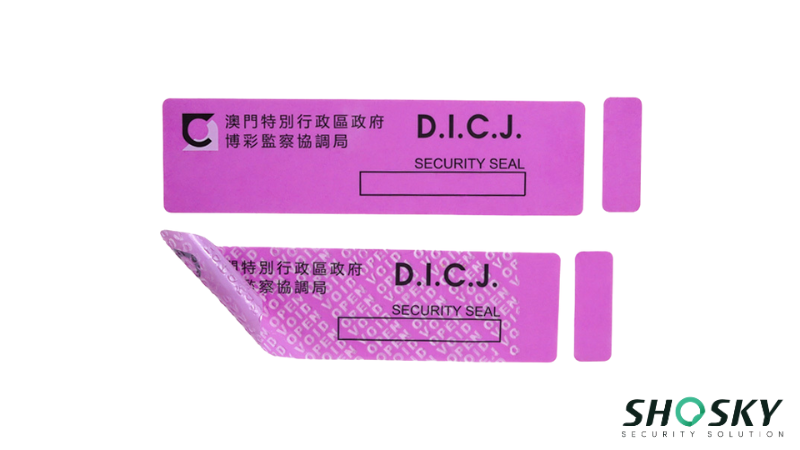
For example, a tamper-evident seal on a sealed evidence bag ensures that critical forensic materials remain untouched, preventing challenges to the authenticity of the evidence in court. Custom tamper-evident packaging tailored to meet regulatory standards further reinforces evidence integrity.
2. Contraband Control
In correctional facilities, tamper-evident labels, security tapes, and seals are applied to lockers, packages, and storage units to combat smuggling.
For instance, tamper-evident labels used on inmate mail or personal belongings alert staff to any unauthorized attempts to introduce contraband. These seals serve as a proactive tool in identifying breaches and maintaining the safety of the facility.
3. Document Security
Sensitive documents in law enforcement, such as case files and warrants, are protected using tamper-evident solutions like custom security seals or Level 2 PE Bag Security Films. These solutions ensure documents remain unaltered during handling or transport.
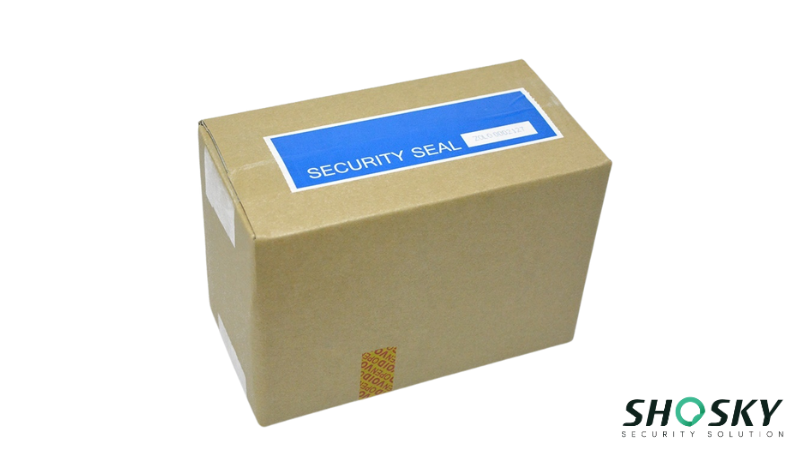
Security films also allow easy inspection without compromising seal integrity, providing a balance between protection and efficiency.
4. Asset Protection
High-value equipment, weapons, or sensitive items used by law enforcement are secured using strap seals, pull-tight seals, or wire seals. These seals not only deter theft or tampering but also provide clear evidence of any unauthorized activity.
For example, transport containers for surveillance equipment equipped with tamper-evident seals ensure equipment remains intact, safeguarding the agency’s operational readiness and credibility.
Across all these applications, tamper-evident technology provides clear evidence of any unauthorized activity. Its custom nature enables industries to meet compliance requirements, safeguard items, and maintain customer confidence.
What Are the Tamper-Evident Requirements?
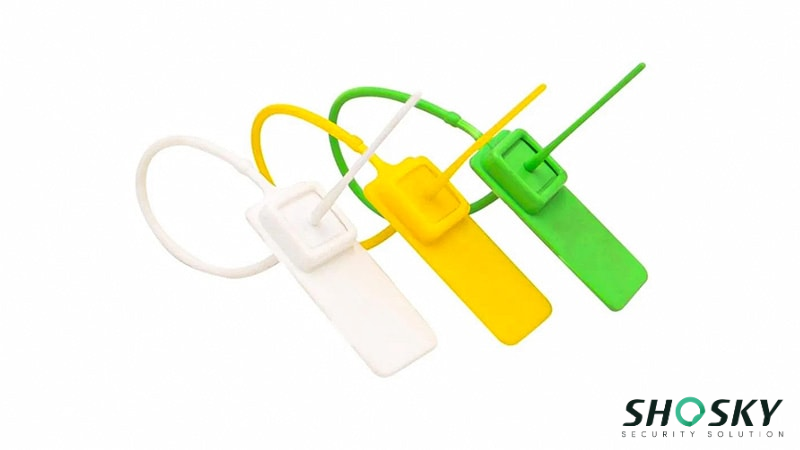
The use of tamper-evident packaging gained prominence following the 1982 Tylenol tampering incident, leading to FDA regulations mandating such packaging for over-the-counter drugs. This regulatory framework underscores the importance of tamper-evident solutions in safeguarding public health and safety.
When it comes to Law Enforcement and Prisons, evidence seals also must adhere to strict regulations to ensure they provide reliable security and meet industry expectations.
Compliance with global standards, such as those established by the International Organization for Standardization (ISO) and the American Society for Testing and Materials (ASTM), is critical for maintaining product integrity. For example, ISO 17712 certification is a key requirement for high-security seals, confirming they meet rigorous criteria for strength, durability, and tamper resistance.
Adhering to these standards and regulations not only safeguards products but also strengthens a company’s reputation, positioning it as a reliable and responsible brand in competitive markets.
Customization and Design Options
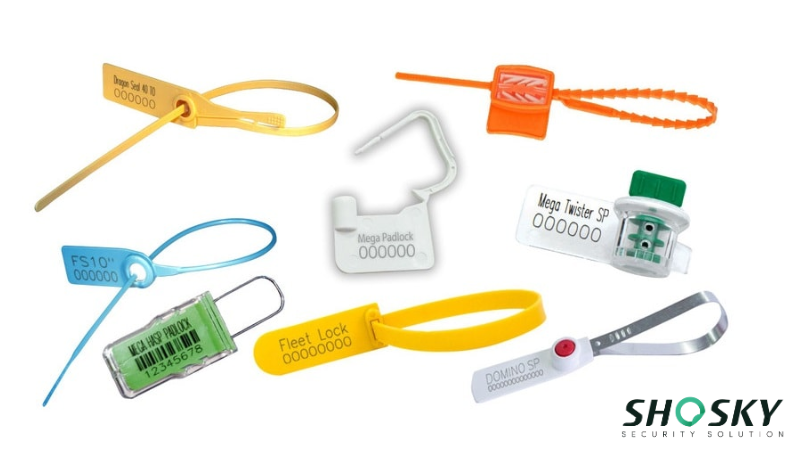
Tamper-evident seals can be customized to meet specific security needs, offering a combination of functionality, branding, and enhanced protection. Businesses and organizations benefit from custom designs that align with their operational requirements and branding goals.
Key customization options include:
| Customization Option | Description | Benefit |
|---|---|---|
| Company Logos & Text | Seals printed with your logo or messaging | Enhances branding and deters tampering through uniqueness |
| Color Coding | Seals in different colors by type, department, or risk level | Supports fast visual identification and categorization |
| Holographic Features | Security holograms embedded in the seal | Prevents counterfeiting and adds a premium security layer |
| Barcoding & Serial Numbers | Unique identifiers printed or embedded | Enables traceability, inventory management, and audit trails |
| Material & Size Variants | Choice of plastics, metals, or films in various sizes | Matches specific use-cases, from document bags to shipping crates |
| Tamper Evident Technology | Void labels, frangible films, destructible adhesives | Offers the right evidence of tampering per application need |
These customization options empower agencies to implement a seal strategy that enhances operational efficiency while maintaining the highest security standards.
How to Choose the Right Tamper Seal Solution?
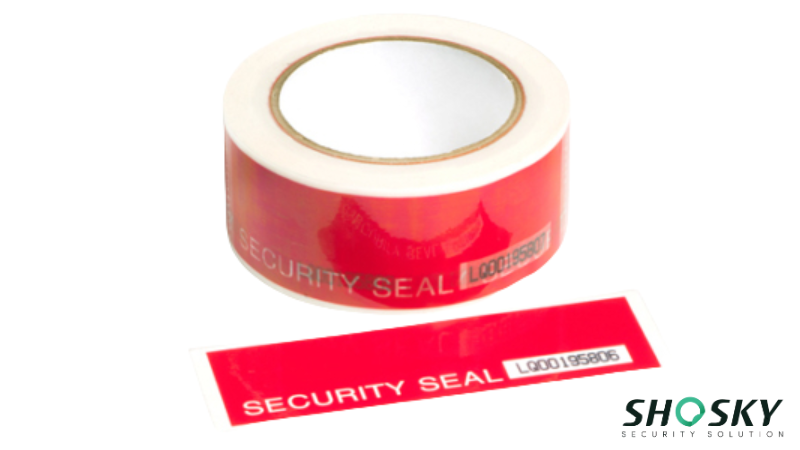
When choosing a tamper-evident seal, it’s important to consider several key factors to ensure the best fit for your security needs.
Start by assessing the security level and product type. High-risk items may require specialized seals, such as color-changing or destructible seals, to provide clear indicators of tampering.
Next, consider the material and size of the seal. Durable materials like plastic or metal are ideal for different applications, and the seal’s size should align with the product or packaging. Availability and purchase options matter, too. Check if the seal is in stock or requires customization, and buying in bulk quantities can often save costs and streamline logistics.
Lastly, rely on a reputable manufacturer known for producing high-quality and reliable tamper-evident seals. It ensures a secure and effective solution. By keeping these factors in mind, you can select a tamper seal that provides the best protection for your products.
FAQs
Are tamper-evident seals reusable?
No, tamper-evident seals are not reusable. Once a seal is broken or compromised, it cannot reliably indicate future tampering attempts.
What is the difference between tamper-proof & tamper-evident?
Tamper-proof means that a seal or product is designed to prevent any tampering or unauthorized access. Once tampered with, it cannot be restored or used again.
Tamper-evident, on the other hand, refers to a seal or product that shows clear signs of tampering, allowing you to detect any interference, but it may not necessarily prevent tampering from occurring.
What are the most common types of tamper-evident seals used in prisons?
In prisons, destructible seals, color-changing seals, and those with serial numbers are commonly used.
Conclusion
To sum up, tamper-evident seals are an essential part of maintaining security, trust, and accountability in law enforcement and prison settings.
These seals provide clear evidence when tampering occurs, ensuring the integrity of evidence, preventing the introduction of contraband, and safeguarding sensitive documents and equipment.
By understanding their applications, organizations can enhance their security protocols and maintain trust in their operations.
Protect with Shosky Security
At Shosky Security, we understand the critical importance of security and integrity in law enforcement and correctional settings. That’s why we offer a comprehensive suite of tamper-evident solutions to safeguard your most valuable assets. So, just don’t wait—ensure the integrity of your operations with our advanced security solutions! Contact us today to learn more or request a consultation.

